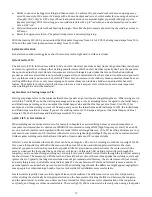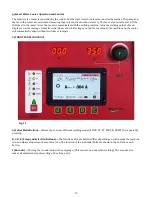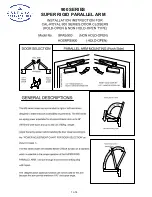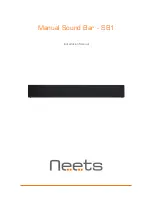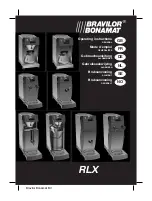
14
you set the background amperage and the peak time (pulse-on time or duty) based on that maximum amperage. You set
both the background amperage and the peak time as a percentage of the maximum amperage. Peak time refers to the
peak pulse current number.
The actual duration of the peak time, in seconds or in fractions of a second, depends on the
third variable—the pulse frequency. The pulse frequency determines the speed, for lack of a better word, of the time it
takes to switch between the higher and the lower amperage. There are two schools of thought:
Use low-speed pulse frequencies between 0.5 and 2.0 PPS (pulses per second or Hz) to create a ripple effect in the
weld bead. The pulsing can easily be seen by the human eye. When using low-speed pulse frequencies, you typically
will not experience any interference or other technical difficulties with either fixed shade or auto-darkening welding
helmets.
Use high-speed pulse frequencies between 25 and 100 PPS to create a smooth weld bead, much like DC TIG without
pulse. The pulsing usually cannot be seen by the human eye. You typically use high-speed pulse frequencies when
welding stainless or mild steel out of position, when heat affected zones need to be kept to a minimum, or when
warpage or distortion of parts are a concern. When using auto-darkening welding helmets, depending on the
frequency of the cartridge in the welding helmet and the frequency you set the machine to, there may be a very
narrow band of specific frequencies where interferences are possible. Whether interferences happen at all, or at
what frequency the interferences occur at, depends on the welding helmet you use (make, model, etc.); we cannot
predict who will experience interferences. If, when welding, you notice flickering, change your frequency by +/- 20
PPS and try again.
For most applications, we recommend setting the background amperage to 25% and the peak time (pulse-on time or
duty) to 25%.
Example: You set your max amperage to 100 amps, your background amperage to 25%, and your peak
time to 25%. For 25% of the time, you weld at 100 amps, and for 75% of the time, you weld at 25 amps.
Using these settings during a low-speed pulse application (with the right torch movement and either no filler or while
using a lay wire technique) allows you to produce nice ripples. Using these settings during a high-speed pulse
application allows you to achieve penetration close to what 100 amps of straight DC gives, but with significantly lower
heat input and a much more controllable puddle. Even though you only reach 100 amps 25% of the time, and 25 amps
75% of the time, in a high-speed pulse scenario it is NOT safe to assume that the first quarter at 100 amps and the
second through fourth quarters at 25 amps equal 43.75 amps of overall heat input (100 + 25 + 25+ 25 = 175/4 = 43.75).
While the math does not hold true in high-speed pulse applications, the math comes a lot closer in low-speed pulse
applications. In a high-speed pulse application, at a 25 PPS pulse frequency setting, you introduce 100 amps into the
base material 25 times per second, and at a 50 PPS pulse frequency setting, you introduce 100 amps into the base
material 50 times per second. Even though this occurs for a short or a very short period of time, the time between the
100 amp bursts is not long enough to let the material really cool down to an average of 44 amps of heat input.
Nevertheless, a high-speed pulse application is significantly cooler than just DC TIG.
The strongest effects and the best results occur when you set the difference between the peak amperage and the
background amperage rather high. With the Invertig 313/400, you can adjust the pulse frequency from 0.4 to 999.9 PPS,
the background amps from 10 to 90%, and the peak time (pulse-on time or duty) from 10 to 90%.
i) Pulse in AC TIG (Square Wave Only)
In AC TIG, the pulse function is only available in the square wave form (the standard wave form). Also, the AC pulse
frequency adjustment range is much narrower than the DC pulse frequency range and is typically used only for low-
speed pulse applications. Due to the wide range of AC frequencies, and to avoid interferences, the pulse frequency
cannot be set higher than the AC frequency. AC low-speed pulse applications enable you to obtain the stack of dimes
look and also enable you to fix less attractive welds simply by running the torch over them at a steady, slow speed that
allows the low-speed pulse to put the ripples in. You can also join material with low-speed pulse using a lay wire
technique. In place of high-speed pulse, we recommend the use of the triangular wave form instead, which achieves
similar results. With the Invertig 313/400, you can adjust the pulse frequency from 0.4 to 20.0 PPS, the background
amps from 10 to 90%, and the peak time (pulse-on time or duty) from 10 to 90%.
Содержание Invertig 313
Страница 6: ...6 Fig 1 ...
Страница 33: ...33 12 WIRING DIAGRAM Invertig 400 AC DC ONLY ...
Страница 34: ...34 13 EXPLODED VIEW INVERTIG 400 AC DC ONLY ...

















